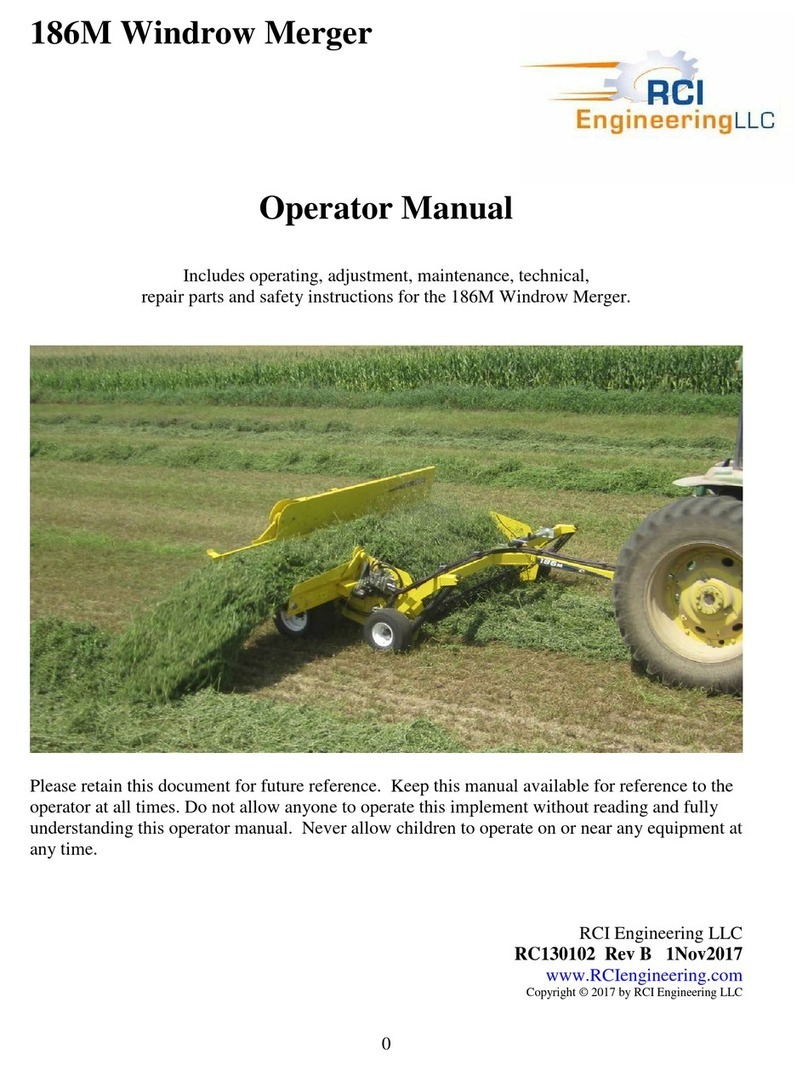
5
4. Sweeping Tunnel Cleanout (T7270 and T7170)
•Hydraulic cylinders sweep remaining crop into the Ag-Bag when finished
•Reduces labor, time and plastic usage when finishing and starting a new Ag-Bag
•Reduces forage loss and increases packing at the end of each Ag-Bag
5. Removeable Stripper Bar Plates
•Bolt on design can be replaced as one complete plate or smaller sections
•Ease of access to hardware with sweeping tunnel cleanout open
6. Middle Tunnel Extension (option)
•Increase tunnel length by nearly 3 feet
•Three tunnel pieces stack on each other for transport mode under 8’6” wide
•In Ag-Bagging mode, tunnels are moved using lift system and pinned together
quickly
•Longer tunnel allows tough forages like alfalfa to be packed using tunnel for greater
density and smoother sides before moving into the Genuine Ag-Bag
7. 300-Foot Cables Standard
•Ability to fill and use 300-foot bags without using cable extensions
8. New Lift System for Bag Cradle and Tunnel Extensions
•Stores Ag-Bags and tunnel extensions on machine without climbing on the machine
9. Redesigned Backstop Lifting Points and Backstop Hooks
•Cradle can be used to lift backstop
•Backstop can be lifted with multiple devices while staying away from backstop rope
•Backstop hooks is redesigned for greater ease of rope installation
•Backstop design is improved for increased durability
10. Hydraulic Tank Redesign
•Larger tank for greater capacity and better cooling
•Easier accessibility
11. Serviceability
•Control station is in one location with all machine controls in one place
•Oil bracket to store lubrication for chain maintenance
•Easy to open shields for chain inspection
•PTO shield movement –storage locking in transport
•Integrated toolbox for convenience and storage
12. Transportation
•Hitch design changes direction placing the tunnel on the side of the road to keep the
tunnel out of the on-coming lane of traffic
•Better visibility while maintaining the 8.6-foot travel width
•Hitch safety chain is standard on all machines
13. Integrated Hydraulic Lift System (T7170 and T7270)
•Hydraulic and manual jack system standard on all machines
•Machine is lifted hydraulicly to quickly change between transport and Ag-Bagging




























